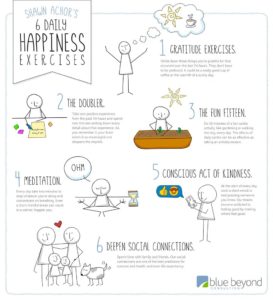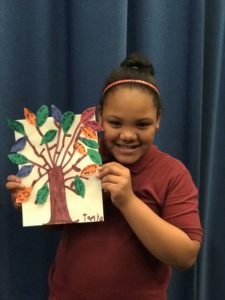Every holiday season we gather with friends, family, delicious foods, and we are reminded to be grateful. But what exactly does it mean to be grateful? Gratitude can be hard to define – is it an emotion, a behavior, a personality trait? Although landing on an exact definition is challenging, there is a lot of research out there that helps us understand what gratitude is and how it positively influences our physical, emotional, and social health.
Most simply, gratitude can be understood as noticing the good. Whether it’s something that happened to you personally, or something that happened on the other side of the world, gratitude is acknowledging that good thing. This is easier said than done. Human brains have a negativity bias, which means we are prone to see the world in a negative light. This is a survival mechanism left over from pre-modern times when noticing threats in our environment meant an increased chance of survival.
But now that our brains don’t have to be in constant survival-mode, making a conscious effort to notice the good is the thing that will help us live longer and healthier. Research on the topic shows that gratitude has tons of physical benefits. Those who are grateful have stronger immune systems, lower blood pressure, and get better sleep at night. Gratitude also improves general well-being; it reduces stress and depression and helps us strengthen our social relationships. And there’s a reason for this!
On a biological level, gratitude rewires our brains, increasing the production of brain chemicals linked to happiness such as dopamine and serotonin. Ready for some more science? Gratitude also activates ventral and dorsal medial pre-frontal cortex parts of the brain, which is responsible for feelings of connectivity and understanding. When these parts of the brain engaged, we are more capable of expressing empathy and forming close interpersonal relationships.
Here at DMF Youth, we acknowledge that actively practicing gratitude is an important tool to master. We bring this into our programs by teaching students how to “scan the day for the positive.” This exercise involves taking a few minutes to reflect on the day and everything that happened, while focusing on the things that brought joy. This can be something as small as cherishing that moment of warm sun on your face, or appreciating your friend who shared their dessert with you. Even a few minutes of recalling these seemingly mundane moments has been shown to create a positive structural change in the brain. For the month of November, our students have been learning how to scan the day for the positive, filling out gratitude calendars nightly with three moments, experiences, people, or things that they are grateful for that day. This past week, our older children have also been making gratitude trees and our younger children have been making colorful mandalas!
Shawn Anchor, best-selling author and psychologist, introduced six daily happiness exercises that, if practiced everyday, can rewire our brains to make anyone happy or happier.

Credit: https://www.bluebeyondconsulting.com/2016/08/happiness-advantage-work-begin-grateful/
Happiness is often misunderstood as something innate. But researchers like Shawn Anchor have proven that people have more control over their happiness than they may think, and gratitude is nothing short of necessary in the recipe for happiness. We encourage our students to practice gratitude and the other happiness exercises as a tool to get out of that dark moment, and to reconnect to ourselves, our communities, and the world around us. DMF Youth believes that utilizing this tool helps our students become healthier, happier, and more resilient individuals.
Although talk of gratitude goes hand-in-hand with the holiday season, be sure to remember that gratitude plays an important role in or lives for more than one month out of the year.



